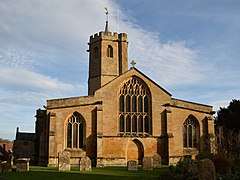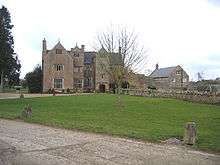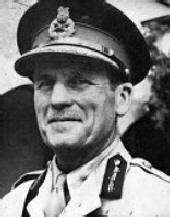South Petherton
South Petherton is a very large village / small country town [2] and civil parish on the River Parrett in the South Somerset district of Somerset, England. It is 5 miles (8 km) east of Ilminster and 5 miles (8 km) north west of Crewkerne. It had a population of 3,367 in 2011 but in 2019 it’s nearly 4,500 [1] The parish includes the village of Over Stratton and the hamlets of Lower Stratton, Yeabridge and Compton Durville, and is approximately 2 miles (3 km) from East Lambrook, Martock and Lopen.
| South Petherton | |
|---|---|
 Church of St Peter and St Paul showing the octagonal tower. | |
 South Petherton Location within Somerset | |
| Population | 3,367 [1] |
| OS grid reference | ST435165 |
| District | |
| Shire county | |
| Region | |
| Country | England |
| Sovereign state | United Kingdom |
| Post town | SOUTH PETHERTON |
| Postcode district | TA13 |
| Dialling code | 01460 |
| Police | Avon and Somerset |
| Fire | Devon and Somerset |
| Ambulance | South Western |
| UK Parliament | |
It is distinctive for the traditional hamstone construction of many of its buildings. In 2005 South Petherton was awarded ‘Somerset Village of the Year’ in a national competition.[3] Historically South Petherton was a market town, but these days is regarded to be a small town with many of its ancient functions having ended by around 1870.[4]
History
The village's name may come from the Old English word Pared meaning boundary and the Saxon word ton meaning settlement, forming ’Paredton’.[5]
A site on Lightgate Road, north of the present village, has produced Iron Age occupation material, though archaeological evidence of any structures have not yet been discovered. Roman material, mostly consisting of coins, has also been discovered locally and, as it is only 2 miles (3 km) from the Fosse Way, Roman occupation is likely, although it may have been abandoned between the 4th and 8th centuries.[6]
The Anglo-Saxon Chronicle of 680 refers to a major battle on the site of the village and the Saxon Ine of Wessex of the Kingdom of Wessex built a palace on present day Silver Street.[7]
A large royal estate of South Petherton was created and the Saxon settlement, Sudperetone (the southern tun on the Parrett), included a minster church, a royal palace and a short-lived 11th century mint. Most of the royal estate passed directly to William the Conqueror and was still a possession of the Crown in 1086. The parish was part of the South Petherton Hundred.[8] Part of the estate was also held by Bruton Abbey from the 12th century until the Dissolution of the Monasteries, then becoming known as the manor of Hele. In 1213 a royal warrant by King John was granted for a market and fair, but by 1243 the main manor had been granted away from the Crown under Henry II and by 1243 South Petherton manor was owned outright by the Daubeney family, who continued to hold it until the late 15th century,[6] the family dying out after Henry Daubeney acquired the earldom of Bridgwater and then failed to produce an heir to succeed him.[9]
The manor reverted to the Crown in 1553, before passing into the ownership of Charles Arundell (d. 1587), who left it to his brother Matthew Arundell, in whose family it remained until 1792, when it was sold to John Baker Edmonds. Edmonds also acquired the rectory estate of South Petherton (known also as the manor of Hele), which had had a complicated history of ownership, including purchase in 1753 by Henry Hele, a successful physician from Salisbury.[10]
Another estate (known as the Manor of Wigborough) was shared by members of the Brome Family from 1581 to 1615, when it passed to the family of Hele of Flete (unconnected to the Henry Hele referred to above) who held it for most of the 17th century.[10][11]
During the English Civil War troops from both sides occupied the town during 1644 and 1645. The town also had a role in the Monmouth rebellion of 1680 and two townsmen were among those who prosecuted in the Bloody Assizes.[6]
It was also recently discovered that South Petherton was, during the 17th century, one of the main centres of bronze cauldron and skillet production. These cooking vessels were used all over the UK.[12]
Governance
As a civil parish, South Petherton has its own parish council with responsibility for local issues, including setting an annual precept (local rate) to cover the council’s operating costs and producing annual accounts for public scrutiny. The parish council evaluates local planning applications and works with the local police, district council officers, and neighbourhood watch groups on matters of crime, security, and traffic. The council's role also includes initiating projects for the maintenance and repair of parish facilities, as well as consulting with the district council on the maintenance, repair, and improvement of highways, drainage, footpaths, public transport, and street cleaning. Conservation matters (including trees and listed buildings) and environmental issues are also the responsibility of the council. The village is part of the South Somerset local government district within the wider Somerset County Council.
Yeovil is a county constituency represented in the House of Commons of the Parliament of the United Kingdom. It elects one Member of Parliament (MP) by the first past the post system of election. The constituency covers the towns of Yeovil, Chard, Crewkerne and Ilminster in Somerset. The current MP is Marcus Fysh, a member of the Conservative Party.
An electoral ward in the same name exists. Although South Petherton is the most populous area the ward stretches to Shepton Beauchamp and Seavington St. Mary. The total ward population at the 2011 census was 4,866.[13]
Residents of South Petherton also form part of the electorate for the South West England constituency for elections to the European Parliament.[14]
Geography
South Petherton is situated between the Devon hills to the west, the flat wetland area of the Somerset Levels and Moors to the north, and the hills of Dorset to the south.
It lies on low lying undulating land of Yeovil Sands at the foot of a limestone ridge, which has been quarried for Petherton stone, and for sands and clays suitable for brick and tile making.[6]
Climate
Along with the rest of South West England, South Petherton has a temperate climate which is generally wetter and milder than the rest of the country.[15] The annual mean temperature is approximately 10 °C (50.0 °F). Seasonal temperature variation is less extreme than most of the United Kingdom because of the adjacent sea temperatures. The summer months of July and August are the warmest with mean daily maxima of approximately 21 °C (69.8 °F). In winter mean minimum temperatures of 1 °C (33.8 °F) or 2 °C (35.6 °F) are common.[15] In the summer the Azores high pressure affects the south-west of England, however convective cloud sometimes forms inland, reducing the number of hours of sunshine. Annual sunshine rates are slightly less than the regional average of 1,600 hours.[15] In December 1998 there were 20 days without sun recorded at Yeovilton. Most the rainfall in the south-west is caused by Atlantic depressions or by convection. Most of the rainfall in autumn and winter is caused by the Atlantic depressions, which is when they are most active. In summer, a large proportion of the rainfall is caused by sun heating the ground leading to convection and to showers and thunderstorms. Average rainfall is around 700 mm (28 in). About 8–15 days of snowfall is typical. November to March have the highest mean wind speeds, and June to August have the lightest winds. The predominant wind direction is from the south-west.[15]
Economy
Agriculture has traditionally been an important local industry, although South Petherton has also been a centre for glove making, cider production and other cottage industries at various points in its history.
Cloth manufacture, continued into the late 18th and 19th century although this was largely replaced by sailcloth and then leather working.[6] The importance of this industry can be seen by the number of mills which remain including; the former flax mill or granary in Hayes End,[16] Joylers Mill,[17] Shutlers Mill,[18] and the former flax mill immediately north of Flaxdrayton Farmhouse.[19]
Landmarks

In Silver Street is a 14th-century manor house.[20] It was restored in the 19th century and nicknamed 'King Ina's Palace'.[21]
The 15th or 16th century Wigborough Manor House was never completed to its original plans and has subsequently been modified many times.[11]
Approximately 1 mile (2 km) from South Petherton is East Lambrook Manor Gardens created by Margery Fish who was known as the 'Leading Lady of Gardening' from the 1950s until her death in 1969.[21] It holds the national collection of geraniums,[22] and a collection of snowdrops.[23]
The "David Hall" (located in the old United Reformed Church) is a local social centre run by the Petherton Arts Trust, a non-profit making organisation formed in 1986 and registered as a charity in 1990.[24] There is also the "Blake Hall" which has a social club downstairs and a hall upstairs where a market is held on the first Sunday of every month, as well as various other activities.
Health and Education
During 2007 Somerset Primary Care Trust consulted local residents about proposals for the redevelopment of South Petherton Community Hospital, which provides Out Patient Assessment and Reablement services.[25] In March 2012, the new hospital was opened by Sophie, Countess of Wessex.[26]
Education is provided within the village by two nurseries for pre-school children, an infants’ school (ages 5–7) and a junior school (ages 7–11). The nearest secondary schools are in Stoke-sub-Hamdon (Stanchester Community School), Crewkerne (Wadham) and Huish Episcopi (Huish Episcopi School).
Transport
South Petherton is located close to the A303 main road, and the nearest railway stations are in Crewkerne and Yeovil. Formerly there were closer stations at Martock and Ilminster, but both of these were closed in the 1960s.
Religious sites
The Church of England Church of St Peter and St Paul has Saxon origins. It retains a 13th-century crosswing, with the remainder of the buildings dating from the 15th century, however it underwent major restorations in the late 19th and early 20th centuries. It has been designated by English Heritage as a grade I listed building. The tower is an irregular octagon on plan, wider on east-west axis,[27] which is believed to be the tallest octagonal church tower in the UK.[28] It houses a ring of twelve bells.[29]
The Coke Memorial Methodist Church was built in 1881–82 to replace an earlier chapel of 1809.[30] It was named after Thomas Coke, who was curate of the village 1772-76 and important, along with John Wesley, amongst the founders of Methodism.
A United Reformed Church was built in 1863. This is now the 'David Hall' and hosts various public events.[31]
Sports
The South Petherton Walking Group is aimed at the over 50's and aims to encourage this healthy, social activity amongst residents and visitors.[32]
The Recreation Ground provides pitches for football and cricket clubs and there are also facilities for tennis and bowls and a children’s play area. The football pitch is particularly large for the standard of football that the club compete in, being over 120 yards long and 90 yards wide. South Petherton Football Club were relegated from the Premier Division of the Perry Street & District League in 2013 after a highly successful run in recent years,[33] but gained promotion at the first attempt and have since competed well back in the premier division.
Notable people
- John Harding, 1st Baron Harding of Petherton (1896–1989)
- John Brunner, science fiction author (1934–1995)
References
- "Statistics for Wards, LSOAs and Parishes — SUMMARY Profiles" (Excel). Somerset Intelligence. Retrieved 4 January 2014.
- South Petherton Parish Plan
- "Winning the Somerset Village of the Year". South Petherton web site. 2005. Archived from the original on 22 November 2008. Retrieved 15 August 2008.
- South Petherton Village History (South Petherton History Society)
- Balch, Tom. "A Concise Potted History of South Petherton". South Petherton web site. Archived from the original on 10 October 2008. Retrieved 15 August 2008.
- Gathercole, Clare. "South Petherton" (PDF). Somerset Urban Archaeological Survey. Somerset County Council. Archived from the original (PDF) on 17 July 2011. Retrieved 2 February 2010.
- Holmes, Edric. "Wanderings in Wessex". Part 3. Fullbooks.com. Retrieved 15 August 2008.
- "Somerset Hundreds". GENUKI. Retrieved 20 October 2011.
- Dunning, Robert (2003). A History of Somerset (3rd ed.). Tiverton: Somerset Books. p. 53. ISBN 0-86183-476-3.
- "Parishes: South Petherton", Victoria County History, A History of the County of Somerset, Volume 4 (1978), at pages 170-198
- Historic England. "Wigborough Manor House (1056928)". National Heritage List for England. Retrieved 23 July 2008.
- "Where were the sites of the Somerset Foundaries". Somerset County Council. Retrieved 15 August 2008.
- "Ward population 2011". Retrieved 5 March 2015.
- "UK MEPs for the South West". European Parliament UK Office. Archived from the original on 17 December 2007. Retrieved 11 January 2008.
- "South West England: climate". Met Office. Archived from the original on 5 June 2011. Retrieved 14 March 2010.
- Historic England. "Former flax mill or granary (1178215)". National Heritage List for England. Retrieved 23 July 2008.
- Historic England. "Joylers Mill (1056978)". National Heritage List for England. Retrieved 23 July 2008.
- Historic England. "Shutlers Mill (1295084)". National Heritage List for England. Retrieved 23 July 2008.
- Historic England. "Former flax mill immediately north of Flaxdrayton Farmhouse (1056973)". National Heritage List for England. Retrieved 23 July 2008.
- Historic England. "Manor House, King Ina's Palace (1056956)". National Heritage List for England. Retrieved 23 July 2008.
- "South Petherton". About Britain. AboutBritain.com. Retrieved 23 July 2008.
- "East Lambrook Manor Garden". Gardenvisit.com. Retrieved 6 February 2008.
- Bourne, Val (4 January 2008). "Snowdrops: White magic". The Telegraph. London. Retrieved 6 February 2008.
- "The David Hall". Petherton Arts Trust. Retrieved 23 July 2008.
- "South Petherton Community Hospital". Somerset Primary Care Trust. Archived from the original on 14 April 2009. Retrieved 23 July 2008.
- http://www.thisisthewestcountry.co.uk/news/9593677.The_Countess_of_Wessex_to_visit_South_Petherton_hospital_next_week/
- Historic England. "Church of St Peter and St Paul (1056959)". National Heritage List for England. Retrieved 23 July 2008.
- Vallins, John (18 February 2003). "Country Diary". The Guardian. London: The Guardian. Retrieved 15 August 2008.
- "South Petherton: SS Peter and Paul". Dove's Guide for Church Bell Ringers. Retrieved 19 October 2015.
- Historic England. "Coke Memorial Methodist Church (1345928)". National Heritage List for England. Retrieved 23 July 2008.
- Historic England. "Former United Reformed Church (1345893)". National Heritage List for England. Retrieved 23 July 2008.
- "South Petherton Walking Group". South Petherton Walking Group. Archived from the original on 3 July 2008. Retrieved 23 July 2008.
- "Petherton Reign Supreme". ViewFrom. Archived from the original on 1 November 2013. Retrieved 31 May 2012.
External links
| Wikimedia Commons has media related to South Petherton. |



